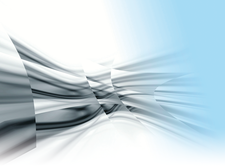Sharpen images with Perl and GIMP
Image Sharpener

© ELEN *, 123RF
How do you sharpen a digital image? A short introduction to the principles and a Perl plugin for GIMP help amateur digital photographers polish their snapshots in a professional way.
If you look at a photograph, you can see at a glance whether or not it is in focus. But what does in focus mean? An image that is in focus has clearly defined transitions from light to dark. A black line with a thickness of just a couple of pixels against a white background is the pinnacle of focus. If the transition between black and white is unsharp – that is, if there is a gradient of dark gray and light gray between the black and white – the line no longer looks crisp. In other words, focus means keeping the light/dark transitions in an image as narrow as possible while at the same time keeping as much contrast as possible.
Photographers can do a number of things to set the stage for creating crisp images. For example, strong, direct sunlight gives contours more contrast than a cloudy sky, which softens up the transitions. Moreover, additional light lets you use a lower ISO setting. Higher ISO values on your camera mean that the sensor produces noisy images that appear grainy and out of focus. Also, it is useful to focus on the main subject of the image: the part of the image the viewer sees first should be sharp, other parts are less sensitive and can be slightly unsharp without the viewer gaining the impression of an out-of-focus image. For example, if the eyes are in focus in a portrait, nobody will worry about the nose being slightly out of focus.
In some cases, accidental focus occurs in the wrong places. For example, most people won't appreciate you capturing the details of wrinkly facial skin in portrait photography. Some fuzziness is preferable in this case, so never take these photographs in direct sunlight. Instead, find a shady place. Soft transitions and less contrast are desirable here, although you might want to sharpen the eyes or mouth in the final shot. If you have used an expensive, digital SLR camera to take RAW images, you will appreciate the benefits of this loss-free storage approach. The difference in sharpness is particularly noticeable when you need to crop the image to focus on a part of it. In contrast, the JPEG format loses fine details and sharpness.
[...]
Buy Linux Magazine
Subscribe to our Linux Newsletters
Find Linux and Open Source Jobs
Subscribe to our ADMIN Newsletters
Support Our Work
Linux Magazine content is made possible with support from readers like you. Please consider contributing when you’ve found an article to be beneficial.

News
-
Parrot OS Switches to KDE Plasma Desktop
Yet another distro is making the move to the KDE Plasma desktop.
-
TUXEDO Announces Gemini 17
TUXEDO Computers has released the fourth generation of its Gemini laptop with plenty of updates.
-
Two New Distros Adopt Enlightenment
MX Moksha and AV Linux 25 join ranks with Bodhi Linux and embrace the Enlightenment desktop.
-
Solus Linux 4.8 Removes Python 2
Solus Linux 4.8 has been released with the latest Linux kernel, updated desktops, and a key removal.
-
Zorin OS 18 Hits over a Million Downloads
If you doubt Linux isn't gaining popularity, you only have to look at Zorin OS's download numbers.
-
TUXEDO Computers Scraps Snapdragon X1E-Based Laptop
Due to issues with a Snapdragon CPU, TUXEDO Computers has cancelled its plans to release a laptop based on this elite hardware.
-
Debian Unleashes Debian Libre Live
Debian Libre Live keeps your machine free of proprietary software.
-
Valve Announces Pending Release of Steam Machine
Shout it to the heavens: Steam Machine, powered by Linux, is set to arrive in 2026.
-
Happy Birthday, ADMIN Magazine!
ADMIN is celebrating its 15th anniversary with issue #90.
-
Another Linux Malware Discovered
Russian hackers use Hyper-V to hide malware within Linux virtual machines.

